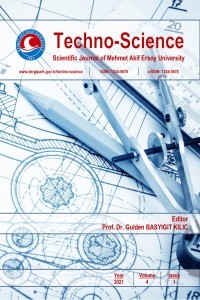Performance Analysis of Pakistan Super League Players Using Principle Component Analysis Approach
Performance Analysis of Pakistan Super League Players Using Principle Component Analysis Approach
___
- [1]. Shah, S., Hazarika, P. J., & Hazarika, J. (2017). A study on performance of cricket players using factor analysis approach. International Journal of Advanced Research in Computer Science, 8(3). [2]. Perera, H., Davis, J., & Swartz, T. B. (2016). Optimal lineups in Twenty20 cricket. Journal of Statistical Computation and Simulation, 86(14), 2888-2900. [3]. Richardson, M. (2009). Principal component analysis. URL: http://people. maths. ox. ac. uk/richardsonm/SignalProcPCA. pdf (last access: 3.5. 2013). Aleš Hladnik Dr., Ass. Prof., Chair of Information and Graphic Arts Technology, Faculty of Natural Sciences and Engineering, University of Ljubljana, Slovenia ales. hladnik@ ntf. uni-lj. si, 6, 16. [4]. Kaiser, H. F. (1960). The application of electronic computers to factor analysis. Educational and psychological measurement, 20(1), 141-151
- Yayın Aralığı: Yılda 2 Sayı
- Başlangıç: 2018
- Yayıncı: Burdur Mehmet Akif Ersoy Üniversitesi
Determination of the Osmotic Dehydration Parameters of Mushrooms using Constrained Optimization
İhsan PENÇE, Melike ŞİŞECİ ÇEŞMELİ, Ramazan KOVACI
Performance Analysis of Pakistan Super League Players Using Principle Component Analysis Approach
İshrat RİAZ, Noureen MUSHTAQ, Mir Muhammad JİLLANİ, Uzma NAVAZ
Food Security in Pakistan: Analyzing the Role of State in Providing Healthy Food
Anaerobic Co-digestion of Sewage Sludge with Food Waste: Kinetic Models
Meltem CEBECİ, Turgay BİŞGİN, Halil ŞENOL, İlknur ŞENTÜRK
Design of Power Line Modem for PLC Integrated with VLC
Sherzada KHAN, Muhammad SOHAİL, Muzamil BOKHARİ
Effect of diflubenzuron on the development of chick embryo
Shazia PERVEEN, Tasveer ISHTİAQ, Faryal ANWAR, Maryam SAEED, Sana FAROOQ, Kainat SARDAR, Rafia KANWAL, Sumaira KANWAL
Testing of New design of Mesh-coupled Axial Blade Distributor for Swirling Fluidization Operation
Muhammad Yasin NAZ, Shazia SHUKRULLAH, Shaharin Anwar SULAİMAN, Afsin GUNGOR
